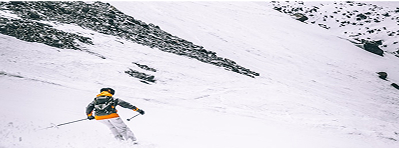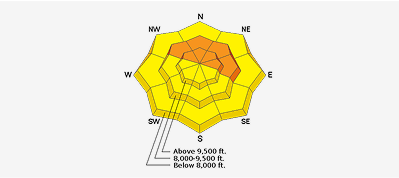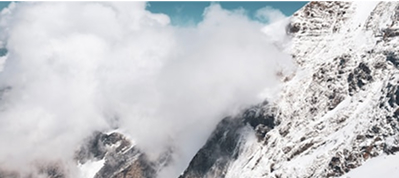With persistent slabs they SLOWLY--sometimes over many days--become safer and safer when they go without new loading. We're at that stage where most of the overlying slabs have rotted to the point that the snowpack has lost its energy. It is starting to remind me of thumping on an over ripe watermelon--that kind of dead feeling. In most of the wind and sun sheltered slopes, there's just deep, rotten snow with little overlying slab so you most likely won't trigger a slide there. But up along the ridges where there are stiffer wind slabs on top of the house of cards, you may be able to pop something out. So it's a very tricky situation and it changes sometimes dramatically from one spot to the next. Most of the cagy, old avalanche pros still don't trust it and they continue to avoid gambling with their life. It's been days now and I still just don't like it.
What is the danger rating? Tell you the truth, we really don't know. The danger rating depends on both the likelihood of triggering a slide and the consequences of the slide. The consequences remain high because most of these slab avalanches are not only 2-3 feet deep but with such a thin snowpack you get raked over the rocks and logs. The only factor that SLOWLY changes with time is the likelihood of triggering a slide. In other words, we are stuck in that low probability - high consequence never-land. I'm thinking most slopes are Moderate danger but still Considerable above 9,500' on the shady aspects. Plus, they winds have picked up tonight and that may exacerbate the problem again.
The Moderate danger ratings I listed below are for the terrain I was in today. I am guessing that above 9,500' especially on wind loaded slopes, the danger is more like Considerable.






